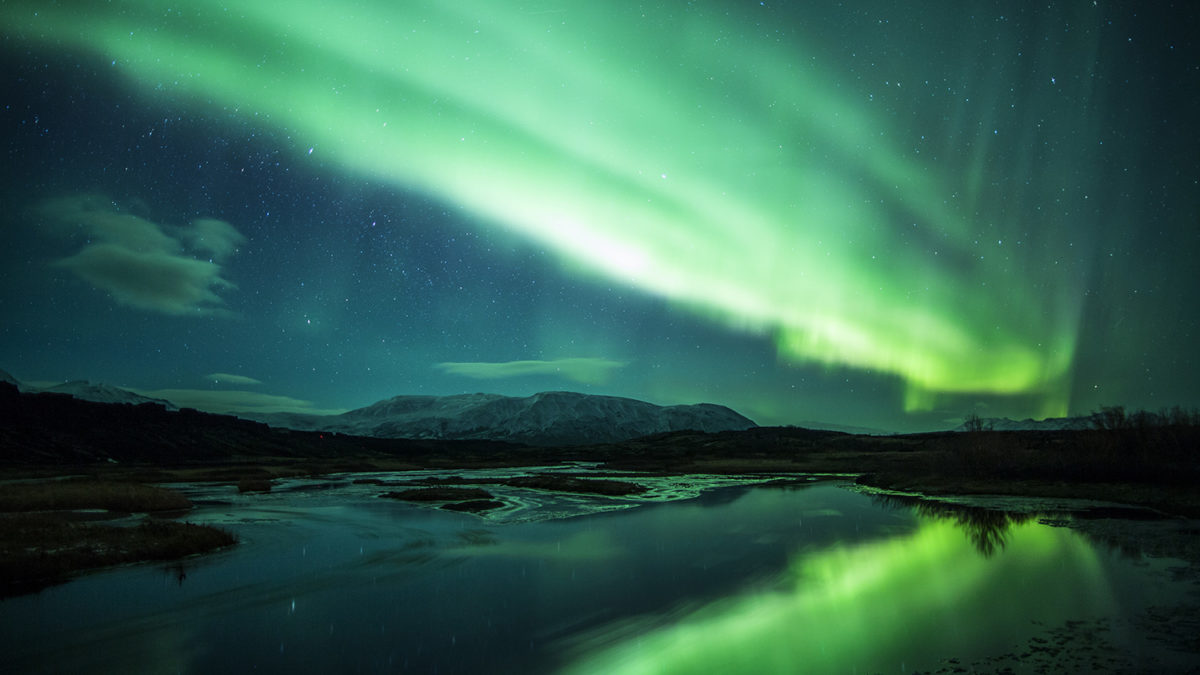
There’s no doubt about it, over the last decade Iceland has become the go-to destination. In fact, since 2013 Iceland has received over 9 million visitors, which is more than the previous 64 years combined. If that doesn’t illustrate this country’s recent appeal, then nothing will!
So why do people flock to Iceland? The lure of the geothermal pools, the diverse nature, the magnificent national parks, the majestic mountains or the active volcanoes… perhaps all of the above! One thing’s for sure, the question on every visitor’s lips is, “will I see the Northern Lights?”
Whilst we can’t answer that question, we can tell you more about the Northern Lights; what affects the chances of them lighting up the night sky, why Iceland is one of the best places on Earth to see them and how you can check whether they’re likely to grace you with their presence.
What are the Northern Lights and why is Iceland the best place to see them?
Otherwise known as Aurora Borealis, they occur most often around the North and South Poles. They appear high in the sky as dancing lights of various colours, including green, blue, and, if you see them in all their glory, red, purple, pink and orange.
Let’s get more technical for a moment…
Gusts of charged particles or electrons from the sun are sent hurling across space in what is known as a solar wind. Some of these charged particles are propelled towards Earth and whilst much of the solar wind is deflected back in to space by the Earth’s magnetic field, some particles are able to enter the Earth’s atmosphere at the poles, where the magnetic field is weaker – hence why Iceland is one of the best places on Earth to see them. The charged particles collide with oxygen or nitrogen particles in the upper atmosphere and transfer energy which some of this energy is released as light.
Still with us?
So depending on where in the atmosphere the electrons interact with the oxygen or nitrogen, different colours of light will be produced. For example oxygen at 60 miles and above produces a green colour (the most commonly seen), but oxygen above 200 miles produces a red colour. Nitrogen at 60 miles produces a blue colour and above 200 miles a violet colour. All of these colours can mix together to form pinks and yellows and whites.
When is the best time to see the Northern Lights in Iceland?
For 8 months of the year, from September to mid-April when the nights are dark.
What are the best conditions for seeing the Northern Lights?
It’s simple – darkness and clear skies. Firstly, you’ll need a night with little to no cloud cover. The good thing about the Icelandic weather is that it changes quickly, so there’s always a chance, no matter how bad the weather might seem. Secondly, head for the dark. Walk away from towns and built-up areas to find a safe, flat area or a higher viewpoint with no mountains or buildings to block the view.
How can I track the Northern Lights?
Our top tip – take a daily look at the Icelandic Met Office as they produce a Northern Lights forecast, predicting the Aurora activity for any given day. The strength of the activity is given on a scale of 0 to 9. The higher the number on the scale, the more activity and the better chance of seeing the Northern Lights. The forecast also predicts the cloud coverage, where the white patches on the map show clear skies.
It’s impossible to know more than a few days in advance, and even then forecasts can change dramatically and quickly. Check regularly for the latest information and keep your fingers crossed.
So, will I see the Northern Lights?
Even if conditions are perfect, sadly, there are no guarantees! The Aurora Borealis is elusive and unpredictable, luck can play a major part, but then that’s what makes them so extraordinary, isn’t it?
To experience them dancing magically across the sky is nothing short of amazing and each light show is a unique experience. Visiting Iceland, no matter what time of year, is an incredible adventure. And if you’re lucky enough to see the Northern Lights, well, that’s just the icing on the very delicious cake.
